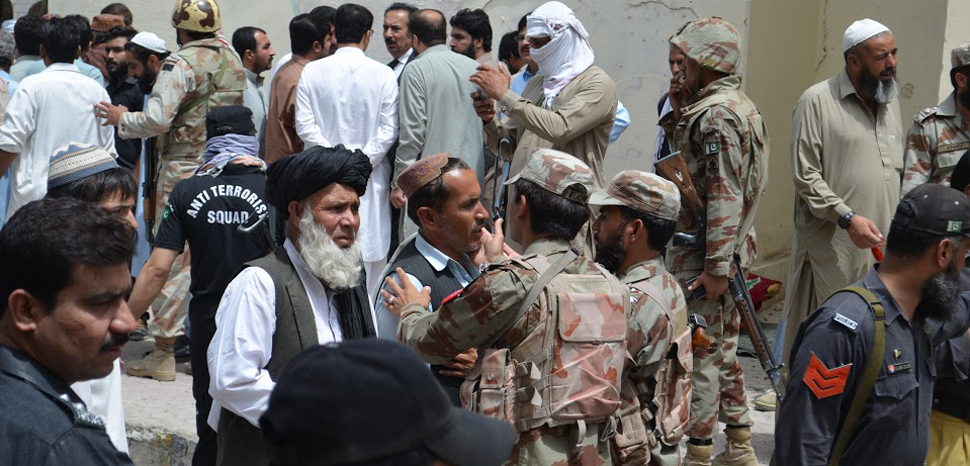Summary
Five people were killed and another 12 wounded in a bombing apparently targeting China’s ambassador to Pakistan on Wednesday. The explosion occurred in the parking lot of the Serena Hotel in Quetta, where ambassador Nong Rong had been staying, though he wasn’t on-site at the time of the attack.
The incident underscores lingering security challenges stemming from a decades-long insurgency in Balochistan, and how these challenges continue to jeopardize the economic promise of the China-Pakistan Economic Corridor (CPEC) and Beijing’s vision of Belt and Road.
It also implies a change of tactics by the Pakistan Taliban and, potentially, growing operational alignment between Sindh- and Baloch-based militant groups.
Background
Wednesday’s bombing was nothing out of the ordinary: the region has seen a string of high-profile attacks targeting Chinese interests over the years, notably the November 2018 raid on the Chinese consulate in Karachi and the May 2019 attack on the Pearl Continental hotel in Gwadar. Both of the above attacks were attributed to the Balochistan Liberation Army (BLA).
Formed in 2000, the BLA is the most recent manifestation of the push for Baloch independence, which dates all the way back to the formation of Pakistan, but took on a more violent dimension during the government crackdowns of the 1970s. Like the Kurdish populations of the Middle East, ethnic Balochs are dispersed through several nation states: Afghanistan, Iran, and primarily Pakistan, where nearly 70% of the global population of Balochs is found. Balochs have their own distinct language and culture, and the ultimate goal of their armed struggle against the Pakistani state has ranged over time from seeking greater political autonomy for Balochistan to formal independence.
More recently, the BLA has been targeting Chinese interests in Balochistan as a way of applying pressure on the Pakistani government. The province is a key cog in the regional transportation networks envisioned by the China-Pakistan Economic Corridor (CPEC), and armed Baloch groups have tapped into popular discontent over forced resettlement and the lack of a local development dividend in projects along the CPEC corridor.
The BLA is regarded as a terrorist group by Islamabad.
Impact
Given the location and the presence of the Chinese ambassador, it was initially presumed that the BLA was behind Wednesday’s attack. However, the Tehreek-e-Taliban Pakistan (TTP) has since claimed the attack.
This in itself is a notable development.
For one, it marks a return to headline prominence by a terrorist group that has been largely marginalized following a sweeping 2014 campaign by the Pakistani security forces in North Waziristan.
Second, though none of the TTP statements make explicit reference to the Chinese ambassador, the attack achieves the same effect as the BLA playbook in that it targets a key vulnerability of Islamabad: its relationship with China, arguably the most essential bilateral relationship of the Pakistani state. The attack was also well outside the TTP’s usual operating range, which suggests a change of tact, whether in the form of actual cooperation with BLA-linked elements or simply the practical recognition of a new avenue of attack.
Whether the ambassador was intentionally targeted or not, the Quetta attack underscores lingering vulnerabilities in CPEC transportation networks. A recent example can be found in the October 2020 attack on a convoy of vehicles carrying employees of the state-owned Oil and Gas Development Corporation Limited, moving from Gwadar to Karachi. Fourteen members armed guards were killed in the ambush – seven private security, and seven members of the paramilitary Frontier Corps, which is under the authority of the Interior Ministry. If such attacks can successfully target a convoy with a 14-strong armed guard, then any goods moving to or from the region are at risk.
Terrorism in Balochistan is an overriding concern of the Chinese authorities, and it’s one that could influence future CPEC-related financing opportunities for Islamabad. In 2018, it was revealed that the Chinese authorities had been engaged in direct talks with Baloch militant groups for over five years, attempting to hammer out security guarantees for CPEC projects. However, these talks have yet to bear fruit and, given the contrasting endgames for Baloch nationalists and China’s partner in Islamabad, they’re unlikely to in the near future.
It is in this context that the Pakistani army has been able to maximize its own influence over the fate – and funds – of the CPEC corridor. Early this year, the Khan government passed a series of new laws creating the CPEC Authority – a parallel planning and administrative apparatus for CPEC projects, complete with authority over how the money will be spent. China is believed to support the formation of the CPEC Authority on the basis that it would increase the involvement of Pakistan’s security forces. Some 15,000 troops were initially deployed to protect CPEC projects in 2017, and that number has only grown in the meantime.
Now we enter a new stage in CPEC’s development cycle: Prime Minister Khan, a one-time skeptic of CPEC’s funding terms, is fully on-board, and the army is in control and is cracking down hard on Baloch nationalists both within and (presumably) without Pakistan. The stage is set for an increase in coercive measures aimed at militant groups and restive populations in Balochistan; however, history has often shown that such approaches can be counterproductive to achieving long-lasting stability.




